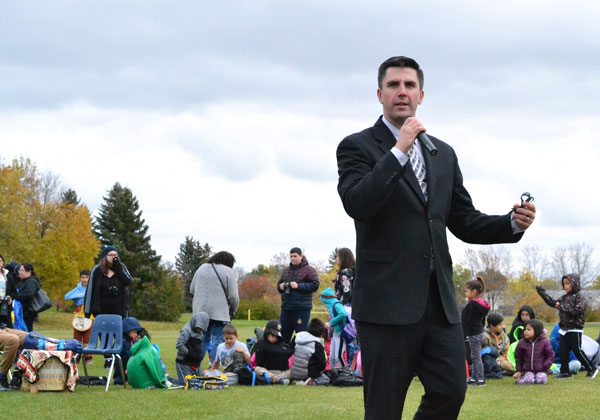
A province-wide initiative aimed at increasing credit attainment and graduation rates among Indigenous students is seeing success in Prince Albert.
Thirty-nine schools have been involved in Following Their Voices since it launched in Saskatchewan classrooms in February of 2015, including Wesmor Public High School and Carlton Comprehensive Public High School.
The government-funded initiative hopes to change student-teacher relationships, how teachers instruct and the overall learning experience for students.
“When it says Following Their Voices, the voices that we follow are the voices of our community, the voices of our teachers and primarily the voices of our students,” said Gina Sinoski, principal at Wesmor.
She said approximately 97 per cent of their 380 students identify as Indigenous. While most are First Nations or Métis, four students are Inuit.
Sinoski said Following Their Voices brings teachers together to meet the needs of students.
An elder visits for both staff and students, and teachers participate in the blanket exercise—an interactive history lesson developed by Indigenous elders, knowledge keepers and educators. Teachers also meet once every two months to set goals.
They seek student feedback through surveys and interviews.
On Thursday, Wesmor students gathered with local elementary schools for a dinner. Senior Wesmor students gave visiting Grade 8s a tour.
Sinoski mentioned a Grade 12 girl she’s known since Grade 9.
“She had such bad anxiety,” explained Sinoski. “For her to say ‘They will help you, they know who we are, they know our culture, they teach us about our culture and they care about us,’—that is the root of Following Their Voices.”
“(It’s) caring and believing in these students and knowing that they are capable and they will achieve.”
This is Wesmor’s fifth year involved. Sinoski said Wesmor hasn’t received funding for the past two years; however, staff are able to train incoming teachers based on their first three years.
For Jeff Court, principal of Carlton, the biggest adjustment since joining the initiative is teachers building relationships with students.
“That means there’s conversation about what activities they’re doing outside of school and just that community feeling,” he said.
“There’s just more focus on that, which then ultimately leads to kids feeling like they belong, that they’re a part of something.”
With that sense of belonging, he said their academics have improved with more participation in class and willingness to engage in learning.
Carlton hosted its second annual Indigenous Day celebration in September, which Court said was driven by Following Their Voices. He hopes the event encourages students to embrace their identities, Indigenous or not.
Elder Harold Walker led the celebration’s opening ceremonies.
“He had said ‘The powwow isn’t an Indian thing, it’s a human thing’ and that just stuck with me because it very much was a celebration of everybody,” said Court.
About 58 per cent of Carlton’s students identify as Indigenous. Its student population is slightly over 1,600.
In a Tuesday news release, the Government of Saskatchewan said there’s been a 20 per cent increase in credit attainment and an 11.8 per cent increase in three-year graduation rates since Following Their Voices was implemented in classrooms.
The province has contributed $8.65 million to the initiative since 2014. In 2017, Indigenous Services Canada (ISC) committed $3.32 million in a three-year funding agreement.

